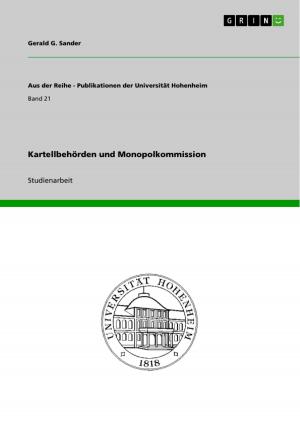Challenges and opportunities of investment on dairy sector of Ethiopia. A Review
Business & Finance, Finance & Investing, Finance| Author: | Abera Beyu | ISBN: | 9783668367302 |
| Publisher: | GRIN Verlag | Publication: | December 21, 2016 |
| Imprint: | GRIN Verlag | Language: | English |
| Author: | Abera Beyu |
| ISBN: | 9783668367302 |
| Publisher: | GRIN Verlag |
| Publication: | December 21, 2016 |
| Imprint: | GRIN Verlag |
| Language: | English |
Seminar paper from the year 2016 in the subject Business economics - Investment and Finance, , language: English, abstract: Ethiopia is one of the Sub-Saharan Africa's developing countries with a large potential in livestock, being 1st among African countries and 9th in the world. Dairying is one of the livestock production systems practiced in almost all over Ethiopia. The cattle population was estimated at about 50.9 million of which indigenous breeds accounted for 99.19 % while the rest is hybrids and pure exotic breeds. The main objective of this seminar is to review the challenges and opportunities of investment in dairy sector in Ethiopia. Dairy production in Ethiopia was mostly traditional and formal dairy production started in the early 1950s. In Ethiopia the three major production systems are: traditional smallholder; privatized state; and urban and peri-urban. Ethiopians consume less dairy products than per capita milk consumption and the country is not known to export dairy product and spent more money on importing milk and milk products. The livestock sector in general and the dairy sub-sector in particular do not make a substantial contribution to the national income, despite its large size, due to different challenges. The challenges are those attributed to demand and supply sides. Demand side includes population growth, seasonality of demand, low per capita consumption, low demand and high transaction costs. Supply side challenges can be: livestock population, animal health problem, feed and nutrition, low productivity and genetics, limited access and high cost of dairy heifers/cows, quality problem, collection problems, institutional concern, lack of technical support, inadequate extension and training services, lack of infrastructures, lack of access to land and lack of credit. This challenge lowers the investment activity in the sector in Ethiopia. Dairy sector investments have also different opportunities like huge resource base and potential for development, favorable conditions and potential for value chain development, huge increasing consumer demand for milk and dairy products, potential role in import substitution, conducive government policies, laws and regulations, income generation and employment opportunities and indigenous knowledge.
Seminar paper from the year 2016 in the subject Business economics - Investment and Finance, , language: English, abstract: Ethiopia is one of the Sub-Saharan Africa's developing countries with a large potential in livestock, being 1st among African countries and 9th in the world. Dairying is one of the livestock production systems practiced in almost all over Ethiopia. The cattle population was estimated at about 50.9 million of which indigenous breeds accounted for 99.19 % while the rest is hybrids and pure exotic breeds. The main objective of this seminar is to review the challenges and opportunities of investment in dairy sector in Ethiopia. Dairy production in Ethiopia was mostly traditional and formal dairy production started in the early 1950s. In Ethiopia the three major production systems are: traditional smallholder; privatized state; and urban and peri-urban. Ethiopians consume less dairy products than per capita milk consumption and the country is not known to export dairy product and spent more money on importing milk and milk products. The livestock sector in general and the dairy sub-sector in particular do not make a substantial contribution to the national income, despite its large size, due to different challenges. The challenges are those attributed to demand and supply sides. Demand side includes population growth, seasonality of demand, low per capita consumption, low demand and high transaction costs. Supply side challenges can be: livestock population, animal health problem, feed and nutrition, low productivity and genetics, limited access and high cost of dairy heifers/cows, quality problem, collection problems, institutional concern, lack of technical support, inadequate extension and training services, lack of infrastructures, lack of access to land and lack of credit. This challenge lowers the investment activity in the sector in Ethiopia. Dairy sector investments have also different opportunities like huge resource base and potential for development, favorable conditions and potential for value chain development, huge increasing consumer demand for milk and dairy products, potential role in import substitution, conducive government policies, laws and regulations, income generation and employment opportunities and indigenous knowledge.















